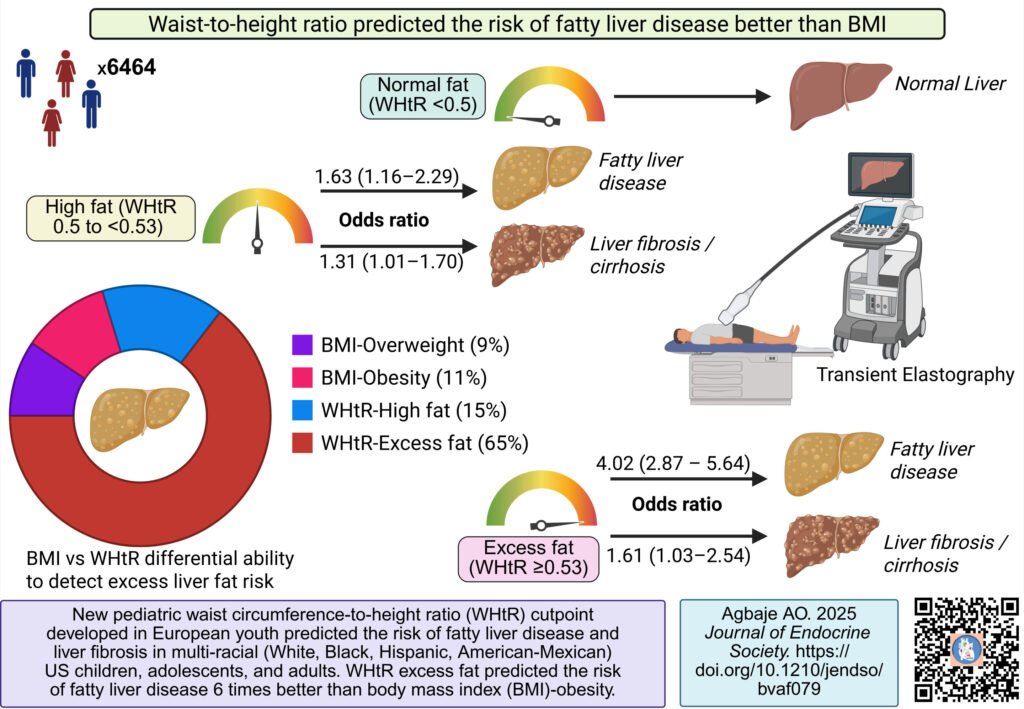A groundbreaking study conducted at the University of Eastern Finland has revealed that waist-to-height ratio is a more accurate predictor of liver damage risk than body mass index (BMI). This simple and cost-effective tool can effectively detect the risk of fatty liver disease in both young and adult populations.
The research, published in the Journal of the Endocrine Society, involved 6,464 participants aged between 12 and 80 years, drawn from the United States National Health and Nutrition Examination Survey (NHANES) conducted between 2021 and 2023. Non-invasive liver scans were performed on all participants using transient elastography to assess their risk of liver steatosis or fibrosis.
The study found that 7.1% of participants had significant or advanced liver fibrosis, while 4.9% had liver cirrhosis. Additionally, 26.1% of participants showed signs of liver steatosis. Previous studies have shown that BMI-diagnosed obesity is a risk factor for liver steatosis, but recent recommendations suggest that obesity should be confirmed using additional measures like waist-to-height ratio.
Waist-to-height ratio was identified as a highly sensitive and specific predictor of total body fat mass and abdominal fat mass in pediatric and young adult populations. Cutpoints for normal, high, and excess fat mass were established and validated to predict the risk of various health conditions, including liver steatosis and fibrosis.
The study revealed that participants with excess fat mass, indicating obesity, had a significantly higher risk of liver steatosis and fibrosis compared to those with normal fat mass. Waist-to-height ratio-estimated fat mass outperformed BMI in predicting liver steatosis and fibrosis, making it a valuable tool for screening, prevention, diagnosis, and management of liver diseases.
Lead researcher Andrew Agbaje, an associate professor at the University of Eastern Finland, emphasized the universal accessibility and clinical relevance of waist-to-height ratio measurements in public health practice. He has also developed a waist-to-height ratio calculator based on his research findings.
This study highlights the importance of using waist-to-height ratio as a reliable indicator of liver damage risk, offering a simple yet effective method for assessing and managing liver health in diverse populations. The findings have significant implications for healthcare professionals and public health initiatives worldwide.


